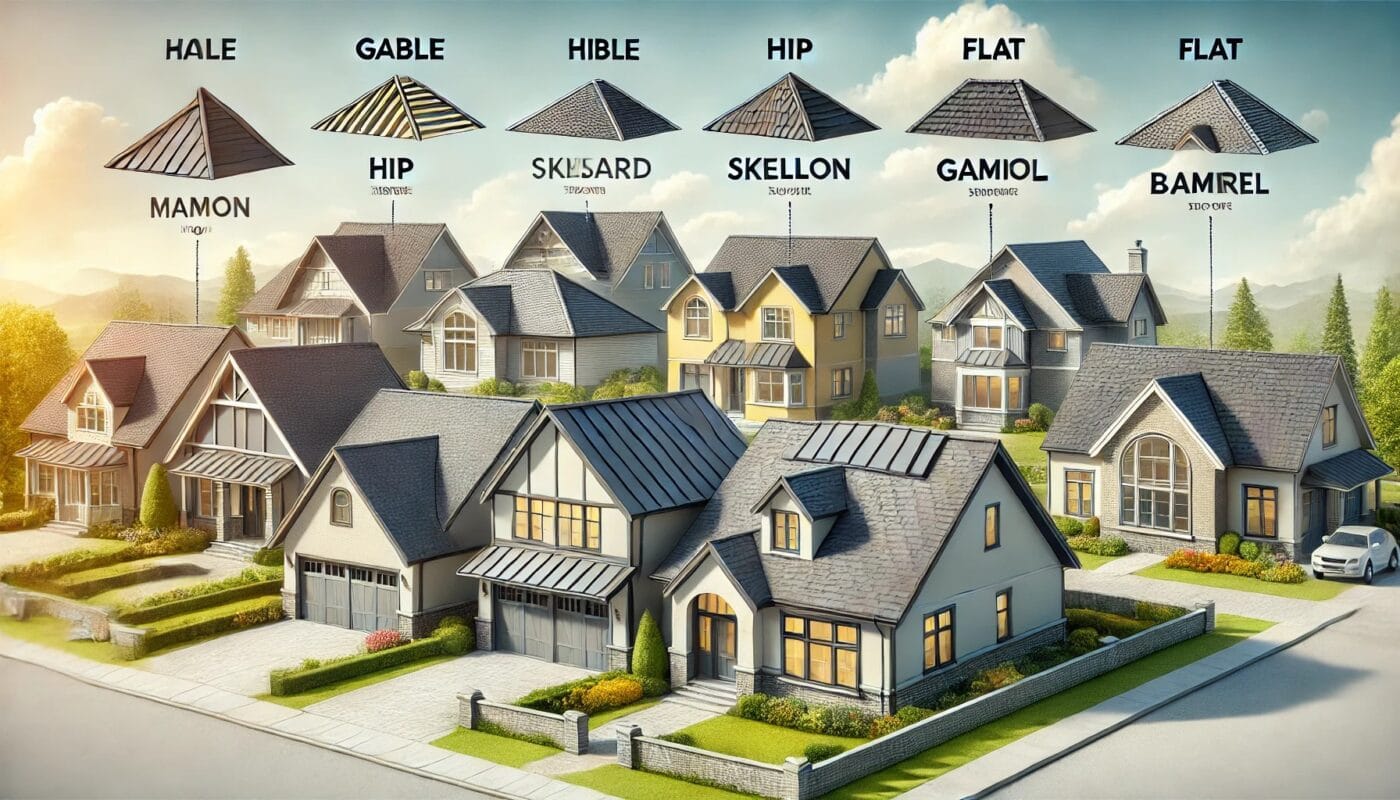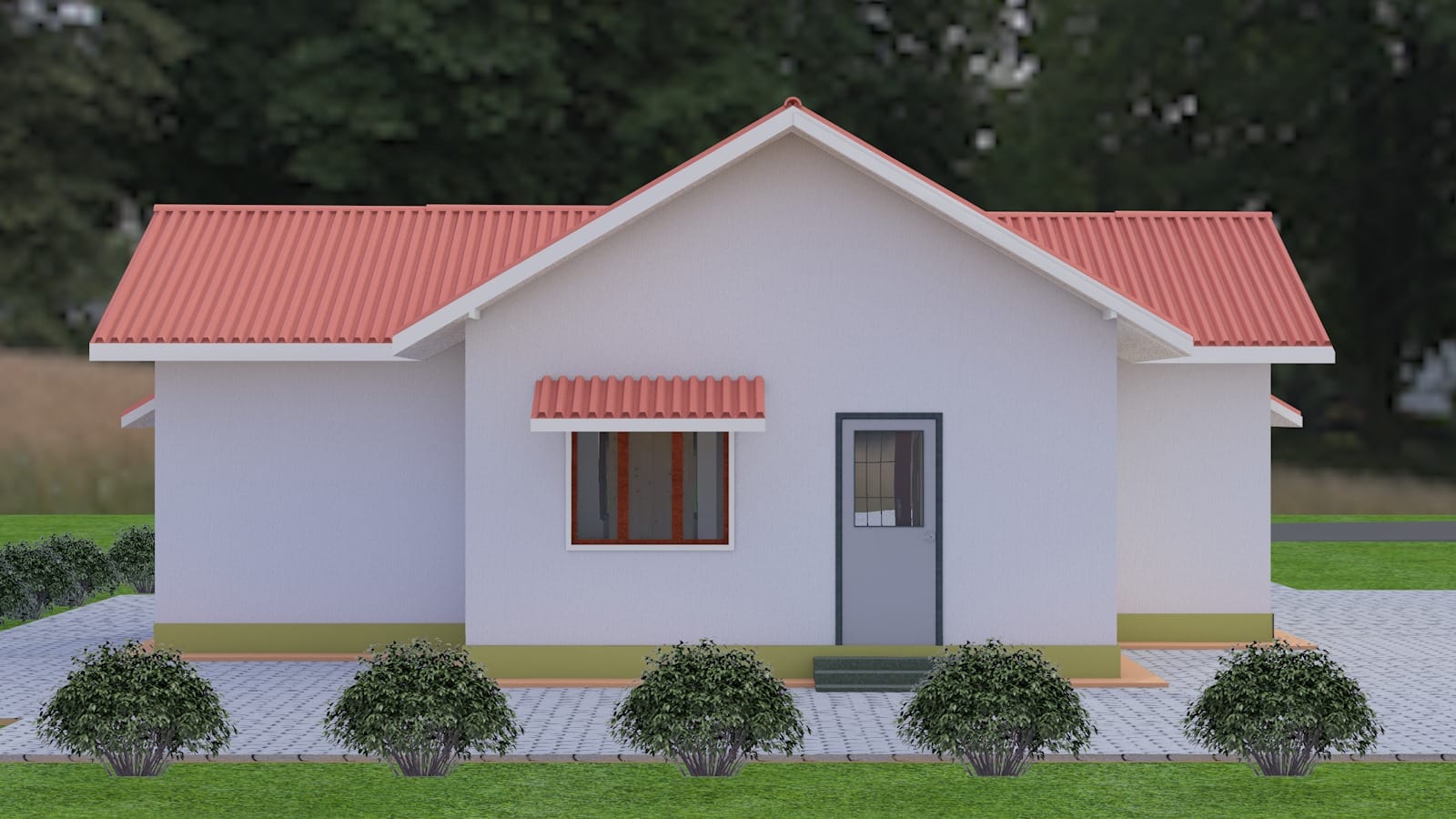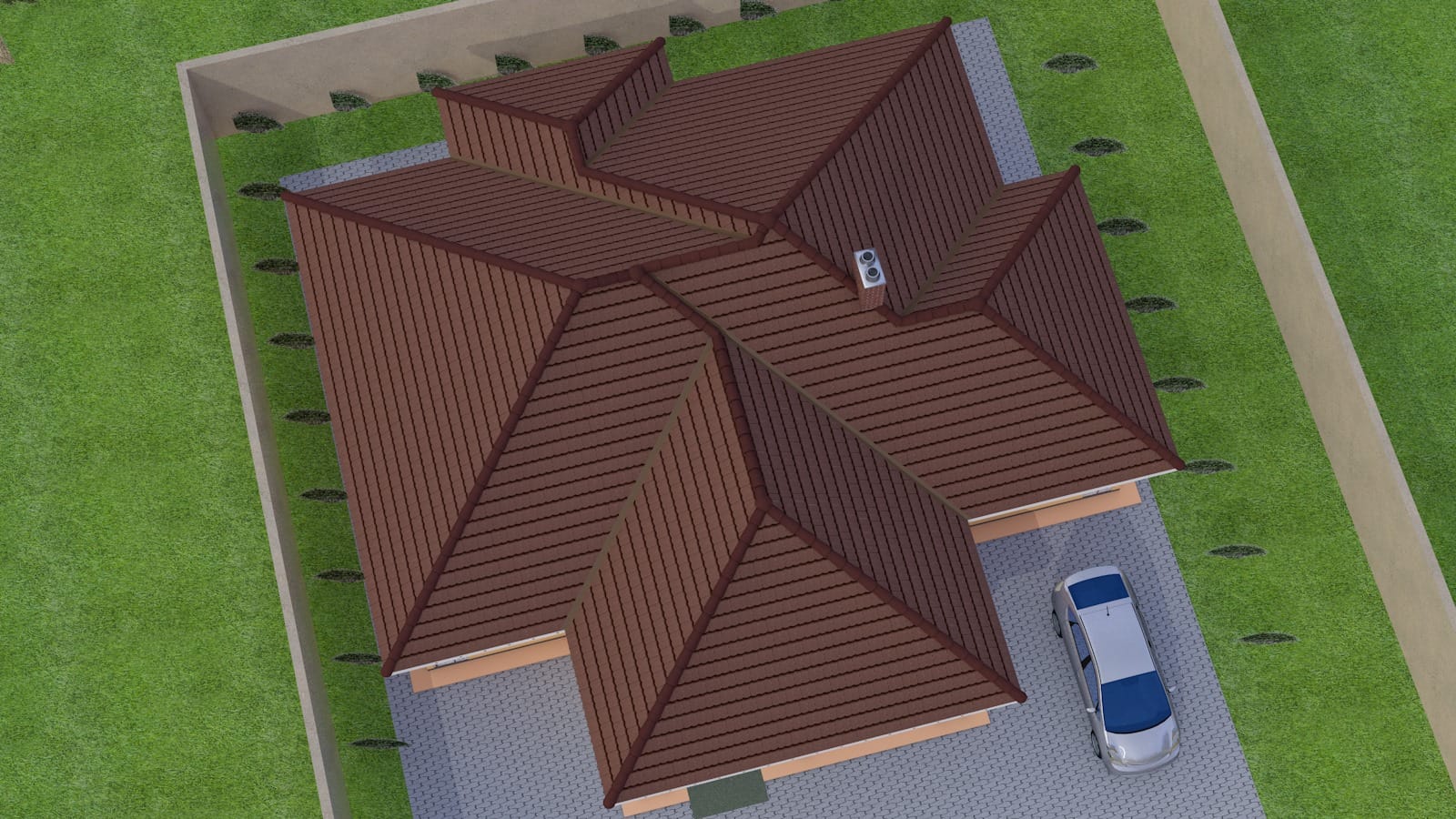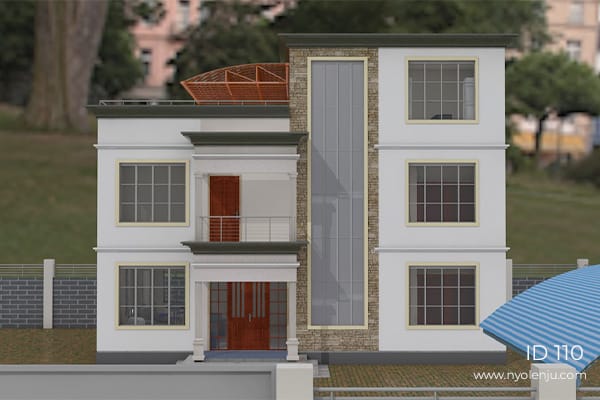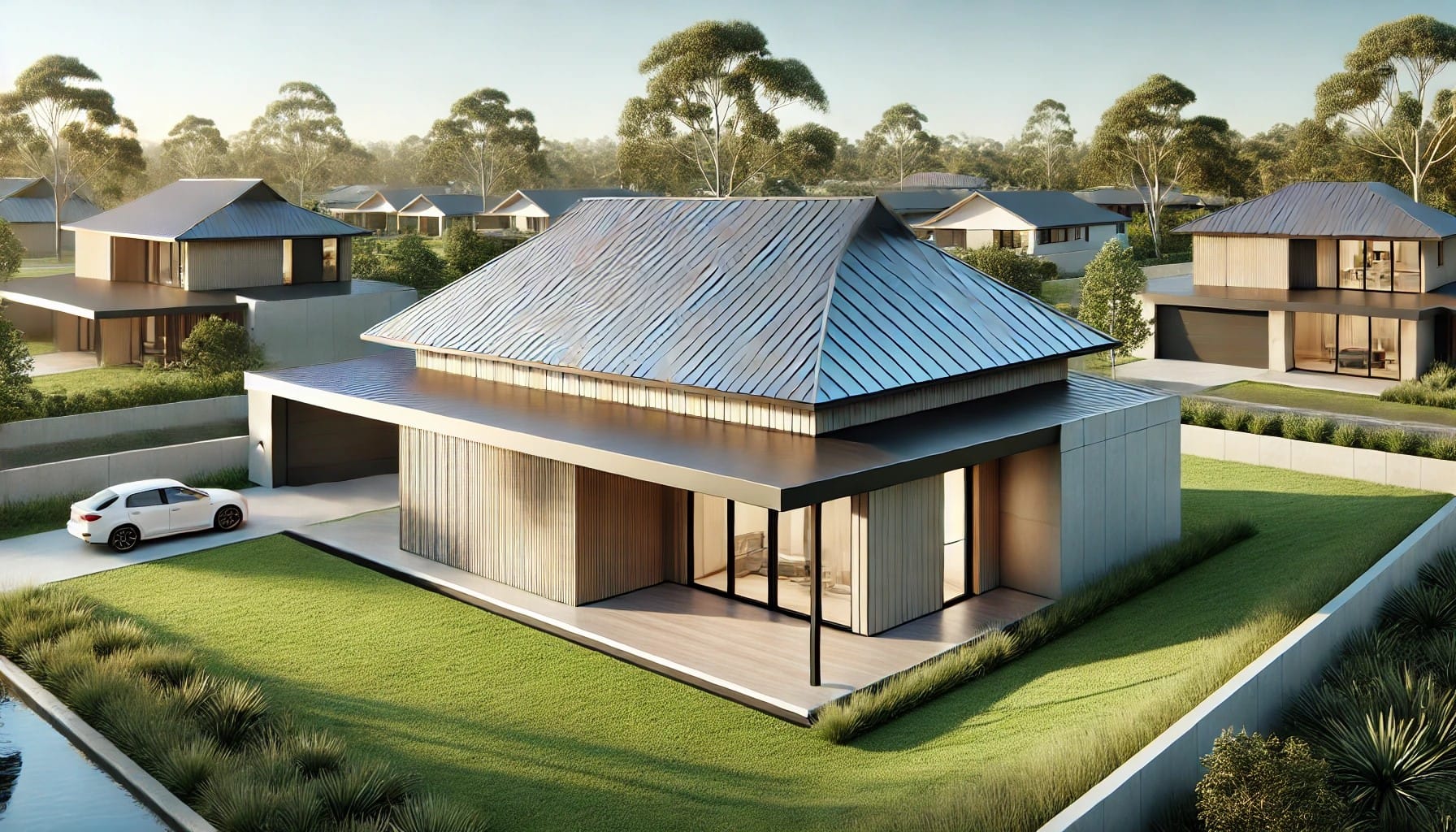House Plans, Architecture
How to Choose the Perfect Roof Design for Your House Plan
Choosing the perfect roof design for your house plan is one of the most critical decisions in home construction. A well-thought-out roof not only enhances the aesthetic appeal of your home but also ensures durability, energy efficiency, and weather resistance. Here’s a guide to help you choose the best roof design for your dream home.
A. Understand the Basics of Roof Designs
When designing a home, the roof is not just a structural necessity—it’s a key architectural feature that defines the character and functionality of your house. Understanding the basics of roof designs will help you make informed decisions that blend practicality with aesthetic appeal. Here’s a closer look at common roof designs and their characteristics.
Why Roof Design Is Important
At its core, a well-designed roof serves as your home’s first line of defense against weather—shielding you from rain, wind, sun, and snow. But its role doesn’t end there. The right roof not only protects the structure below, but also enhances curb appeal and supports energy efficiency.
A thoughtfully chosen roof design can:
- Provide Protection: Safeguards your home and everything inside it from the elements.
- Influence Style: Shapes the overall look and feel of your house, making a strong architectural statement.
- Improve Energy Efficiency: The right materials and shape help regulate indoor temperatures, reducing heating and cooling costs.
- Increase Longevity: Quality design and materials contribute to a roof that stands the test of time, minimizing future maintenance.
- Add Usable Space: Certain roof types create opportunities for attics or loft areas, expanding your home’s functionality.
Understanding these core functions sets the foundation for exploring which roof shapes and styles work best for your needs, environment, and personal taste.
1. Gable Roof
The gable roof is one of the most popular and traditional roof designs. It features two sloping sides that meet at a ridge, forming a triangular shape.
Advantages:
- Simple and cost-effective to construct.
- Excellent for shedding rain, snow, and debris.
- Provides ample attic space for storage or future expansion.
Best For: Regions with heavy rainfall or snow due to its efficient water runoff capabilities.
2. Hip Roof
A hip roof slopes on all four sides, with no vertical ends. The sides meet at a ridge, forming a more stable and wind-resistant structure.
Advantages:
- Greater stability, especially in areas prone to strong winds or hurricanes.
- Enhances the overall structural integrity of the house.
- Offers better shade and energy efficiency.
Best For: Homes in regions with high winds or extreme weather conditions.
3. Flat Roof
Flat roofs are a hallmark of modern and minimalist architecture. Although not entirely flat, they have a very slight slope to allow for water drainage.
Advantages:
- Ideal for rooftop gardens, solar panels, or outdoor living spaces.
- Easier to construct and maintain.
- Offers a contemporary aesthetic.
Best For: Urban or modern homes where additional outdoor space is desired.
4. Mansard Roof
The mansard roof, also known as a French roof, features two slopes on each of its four sides. The lower slope is steeper than the upper slope, creating a stylish and functional design.
Advantages:
- Maximizes living space by creating an additional floor or attic.
- Adds a classic and elegant appearance to the house.
- Allows for customization with dormer windows or balconies.
Best For: Homes that require extra living space without increasing the building’s footprint.
5. Skillion Roof
The skillion roof, or shed roof, consists of a single sloping surface. It’s often used in modern designs or as an extension to an existing roof.
Advantages:
- Simple construction and cost-effective.
- Perfect for rainwater harvesting due to its steep slope.
- Sleek and contemporary appearance.
Best For: Modern homes or as an accent roof for porches and extensions.
6. Gambrel Roof
Often associated with barns, the gambrel roof features two slopes on each side. The lower slope is steeper, while the upper slope is more shallow.
Advantages:
- Provides excellent attic or loft space.
- Adds a rustic and traditional look.
- Efficient use of materials and space.
Best For: Farmhouses or homes with a vintage aesthetic.
7. Butterfly Roof
The butterfly roof is an inverted design where two roof surfaces slope inward, meeting in the middle.
Advantages:
- Unique and modern aesthetic.
- Great for rainwater collection.
- Promotes natural ventilation and light.
Best For: Sustainable and eco-friendly designs.
Choosing the Right Design
Each roof design has its unique advantages and considerations. When selecting a roof style, factor in your house’s architectural style, local climate, budget, and future maintenance needs. Collaborating with a professional architect or structural engineer will ensure your choice is both practical and visually appealing.
Wood Shingle Roof
Wood shingle roofing is often chosen for its timeless appeal and natural beauty. Typically crafted from cedar—prized for its durability and resistance to decay—these shingles add warmth to a home’s exterior. The subtle variations in color and grain deliver a textured, organic look that evolves gracefully, weathering to silvery gray over time.
Characteristics:
- Naturally insulating, helping maintain indoor temperatures.
- Lightweight compared to other roofing materials.
- Provides a layered, rustic profile that enhances cottages, cabins, or homes nestled in wooded or natural settings.
Aesthetic Impact:
Wood shingle roofs create a cozy, inviting ambiance and bring a sense of nature right up to your doorstep. If you’re looking to evoke the charm of a mountain lodge or simply want an earthy, handcrafted touch, wood shingles offer a perfect blend of ruggedness and warmth.
Evolution of Roofing Materials and Trends
The concept of a roof has always centered on shelter and durability, but the materials and styles used have changed significantly over the decades. Traditionally, wood shingles, slate, and clay tiles dominated the scene, chosen primarily for their availability and straightforward functionality. As time marched on, innovations in technology and changing architectural tastes introduced a broader palette.
Today, homeowners and builders can choose from an impressive assortment of roofing materials, each reflecting advances in science and design. Metal roofing, once reserved for utilitarian buildings, now appears in sleek, colorful profiles that complement both modern and traditional homes. Concrete tiles and architectural asphalt shingles have gained popularity for their balance of durability, style, and affordability.
Sustainability has also moved to the forefront, with eco-friendly options like cool roofs, green (living) roofs, and recycled synthetic slates making a statement. Solar shingles, for example, marry protection with energy generation in a subtle nod to both form and function.
Aesthetic trends have evolved as well, with flat and skillion roofs evoking minimalism, while the return of bold, angular lines—like those seen in butterfly and gambrel designs—adds flair and dramatic curb appeal. Ultimately, the evolution of roofing materials and styles mirrors broader shifts in design priorities, from pure practicality to sustainability and self-expression.
B. Consider Your Local Climate
Your local climate is one of the most significant factors when choosing a roof design. A roof that is ideal for one region may be unsuitable for another. Here’s how to align your roof design with the climate:
Hot Climates
In regions with high temperatures, it’s essential to choose roof designs that reflect sunlight and allow for proper ventilation. Gable and skillion roofs are particularly effective as they provide good airflow. Use materials like reflective metal or clay tiles to reduce heat absorption.
Rainy or Humid Climates
Areas with frequent rain or high humidity require roofs with steep slopes, such as gable or A-frame designs. These prevent water pooling and ensure efficient drainage. Additionally, materials like asphalt shingles or treated wood can resist moisture and reduce the risk of leaks.
Snowy Climates
For regions that experience heavy snowfall, roofs with steep pitches are critical. Designs like gable or gambrel roofs ensure snow slides off easily, preventing structural damage. Metal roofing materials are also excellent for these areas as they allow snow to melt and slide off more effectively.
Windy Areas
In areas prone to strong winds or hurricanes, stability is key. Hip roofs are ideal because their sloped sides reduce wind uplift, making them less susceptible to damage. Reinforced materials and secure fastenings further enhance durability.
Mixed or Temperate Climates
For regions with varied weather conditions, a versatile roof design like a hip roof provides balanced protection. Incorporating modern insulation and ventilation systems can also improve adaptability to changing seasons.
Choosing the Right Design
Each roof design has its unique advantages and considerations. When selecting a roof style, factor in your house’s architectural style, local climate, budget, and future maintenance needs. Collaborating with a professional architect or structural engineer will ensure your choice is both practical and visually appealing.
C. Factor in Your Budget
While the aesthetic and functional aspects of your roof design are crucial, your budget plays a significant role in determining what’s feasible. Striking a balance between quality and cost ensures you get a durable, attractive roof without overspending. Here’s how to manage your budget effectively:
Set a Realistic Budget
Begin by establishing a clear budget for your roofing project. Consider all potential expenses, including materials, labor, permits, and additional features like skylights or solar panels. Factor in a contingency fund for unexpected costs.
Understand Material Costs
Roofing materials vary widely in price. For example:
- Asphalt Shingles: Budget-friendly and versatile. Asphalt shingles are among the most popular roofing options in the United States, thanks to their affordability and adaptability. Available in a range of colors and patterns, they make it easy to match your roof to your home’s style and your personal taste.
- Metal Roofing: More expensive initially but cost-effective in the long run due to durability.
- Slate and Tile: Premium options with high durability and aesthetic appeal but higher upfront costs.
Evaluate the long-term benefits of each material to make an informed choice that aligns with your budget.
Explore Additional Roofing Options
- Concrete and Clay Tiles: Fire-resistant and energy-efficient, these tiles are ideal for Spanish and Mediterranean-style homes. While the upfront cost is higher, they offer exceptional durability.
- Wood Shingles: Often crafted from cedar, wood shingles provide a warm, rustic charm. They’re best suited for those seeking a natural look but require more maintenance and are less fire-resistant.
- Synthetic Roofing: Designed to mimic the appearance of wood or slate, synthetic materials offer a lower-maintenance, eco-friendly alternative and are often lighter in weight.
Each material comes in a range of colors and finishes, allowing you to customize your roof to complement your home’s design. Take time to balance the initial investment with ongoing costs and maintenance requirements, ensuring your chosen material fits both your style and your financial plan.
Consider Synthetic Roofing Materials
If you’re searching for an alternative to traditional wood, slate, or tile, synthetic roofing materials are worth a closer look. These engineered products, made from polymers or recycled elements, are designed to mimic the look of natural materials—such as cedar shakes or slate tiles—without the high maintenance or inherent fire risk.
The main advantages of synthetic roofing include:
- Low Maintenance: Synthetic shingles are resistant to rot, cracking, and insect damage, so you won’t need to worry about frequent repairs.
- Enhanced Durability: Many synthetic options are formulated to withstand severe weather, UV exposure, and temperature fluctuations, offering a long service life.
- Eco-Friendly Choices: Recycled materials are often used in production, making synthetic roofing an appealing option for environmentally conscious homeowners.
- Lightweight & Easy Installation: These products are usually lighter than their natural counterparts, reducing the load on your home’s structure and potentially lowering labor costs.
Brands like DaVinci Roofscapes and CertainTeed offer a broad range of styles and colors, making it easy to find a synthetic roof that complements your home’s design while delivering modern performance.
Now, let’s examine how to balance these material choices with labor costs and long-term financial planning.
Evaluate Labor Costs
Labor costs depend on the complexity of the roof design and local market rates. While it might be tempting to opt for the cheapest contractor, prioritize experience and quality to avoid costly repairs or replacements later.
Consider Maintenance and Repairs
Some roofing materials and designs require more maintenance than others. A flat roof, for instance, may need regular inspections for pooling water, while metal roofs are low-maintenance. Choose a roof that fits your budget for ongoing care.
Explore Financing Options
If your dream roof exceeds your initial budget, explore financing options such as home improvement loans or payment plans offered by contractors. Investing in a high-quality roof can save money in the long term through reduced energy bills and maintenance costs.
Compare Quotes
Get multiple quotes from reputable contractors to ensure competitive pricing. Detailed estimates help you understand where your money is going and identify potential cost
D. Align with Your House Plan and Style
The roof design should seamlessly integrate with your house’s architectural style and overall plan. A well-aligned roof enhances the home’s aesthetic appeal and functionality. Here’s how to ensure harmony:
Traditional Homes
For homes with a classic or traditional look, roof designs like gable, hip, or mansard are ideal. These styles complement colonial, Victorian, or craftsman architectures, adding a timeless charm.
Modern and Contemporary Designs
Flat roofs, butterfly roofs, and skillion roofs work best for modern homes. These sleek designs emphasize clean lines, minimalism, and innovative use of space. They also pair well with eco-friendly features like solar panels and rooftop gardens.
Rustic and Farmhouse Styles
If you’re aiming for a rustic aesthetic, gambrel roofs are a natural choice. They evoke the charm of country living and provide additional functional space, ideal for lofts or storage.
Consider the Proportions
The size and shape of the roof should align with the overall proportions of your house. A bulky roof on a small home can overwhelm the design, while a low-profile roof on a large house might appear disproportionate.
Match Materials and Colors
The roofing material and color should harmonize with the house’s exterior. For example, slate or tile roofs add elegance to traditional designs, while metal or concrete roofs suit contemporary styles. Choosing complementary colors creates a cohesive look.
When selecting a roof color, consider the overall style and palette of your home. In recent years, options have expanded far beyond classic shades of tan, brown, gray, and black. Now, you’ll find a spectrum of hues within each color family, as well as bolder choices that can make your home stand out. Want to boost curb appeal or showcase your individuality? Don’t shy away from considering shades like deep green or rich blue for a modern, eye-catching twist. The right color can elevate your exterior, giving your home both personality and value.
Embrace Bold Roof Colors for Standout Curb Appeal
Choosing a distinctive roof color isn’t just about aesthetics—it’s a smart way to boost your home’s curb appeal and overall value. While classic neutrals like tan, gray, and black remain popular, today’s palette offers a spectrum of shades and hues, including vibrant possibilities that make your home truly memorable.
A bold or unconventional roof color—think rich greens, coastal blues, or even eye-catching reds—can serve as a focal point, drawing attention and adding character to your property. This burst of personality not only distinguishes your home from the rest of the neighborhood, but also elevates its perceived value in the eyes of potential buyers.
If you’re feeling adventurous, don’t shy away from selecting a color that contrasts or accentuates your home’s exterior. Just remember to ensure harmony with the overall design and surrounding environment. A thoughtfully chosen standout shade can transform your roof from a mere necessity to a design feature, adding charm, individuality, and lasting appeal.
Trending Roof Colors for 2025
Choosing the right roof color is a subtle yet powerful way to boost your home’s curb appeal and unify your exterior. While classic hues like charcoal, slate gray, earthy brown, and deep black remain popular, 2025 is seeing a fresh surge of creative choices that let homeowners showcase personality and modern style.
- Bold Blues and Greens: Deep navy, forest green, and even lighter moss or teal shades are making an entrance, offering a distinctive look that’s still sophisticated.
- Warm Taupes and Cool Grays: Nuanced neutrals—think stone gray, driftwood, or warm taupe—provide a contemporary twist on tradition, pairing beautifully with stone, brick, and wood exteriors.
- High-Contrast Combinations: Crisp white homes topped with rich black or dark gray roofs remain an eye-catching trend, especially in modern farmhouse and minimalist designs.
- Earthy Reds and Terracottas: Drawing inspiration from Mediterranean architecture, burnt umber and terracotta tones add warmth and unique character.
If you’re feeling adventurous, try mixing things up with a color that “pops” while still harmonizing with your home’s siding and trim. A well-chosen roof color can elevate your exterior, enhance resale value, and make your home stand out on the block—without overwhelming the design.
Integrate Functional Features
Aligning your roof with the house plan also involves considering functionality. Skylights, solar panels, and ventilation systems should be integrated seamlessly into the design to enhance both usability and appearance.
Account for the Weight of Roofing Materials
Not all roofing materials are created equal when it comes to weight—and that matters more than you might think. Heavier options like slate or concrete tiles bring timeless beauty and durability, but they also place greater demands on your home’s underlying structure. Before falling in love with a particular style, consult with your builder or a structural engineer to confirm that your house can safely support the load.
In contrast, materials such as asphalt shingles or metal panels are lighter and typically require less structural reinforcement. Choosing these makes installation easier and can be especially practical for renovations or additions. Always factor in the weight of your preferred roofing materials early in the planning process to prevent potential structural issues and costly modifications down the line.
E. Evaluate Energy Efficiency
Energy efficiency is a critical consideration when designing a roof. A well-thought-out roof design can significantly reduce energy costs and enhance comfort. Here’s how to prioritize energy efficiency in your roof design:
Insulation
Proper insulation minimizes heat transfer between the inside and outside of your home. Use materials like spray foam, fiberglass, or rigid foam boards to create an effective thermal barrier. Well-insulated roofs maintain a comfortable indoor temperature, reducing the need for excessive heating or cooling.
Reflective Roofing Materials
Reflective or “cool” roofing materials, such as metal with reflective coatings or specialized shingles, bounce sunlight away from the house. This reduces heat absorption and keeps your home cooler during hot weather.
Ventilation Systems
Proper ventilation is vital for energy efficiency. Ridge vents, soffit vents, and attic fans promote airflow, preventing heat buildup in the attic and reducing strain on air conditioning systems.
Solar Integration
Design your roof to accommodate solar panels. Solar energy is a sustainable way to lower electricity bills and reduce your carbon footprint. Flat, skillion, and south-facing roofs are ideal for maximizing solar exposure.
Green Roofs
Green roofs provide natural insulation by reducing heat absorption and improving air quality. They also offer eco-friendly benefits, such as rainwater absorption and reduced urban heat island effects.
Light-Colored Roofing
Light-colored roofing materials reflect more sunlight than darker ones, helping to keep your home cooler. Consider options like white metal or light-colored shingles for better thermal performance.
Energy Star Certification
Look for roofing products with the Energy Star label. These products meet strict energy efficiency guidelines set by the Environmental Protection Agency (EPA) and can lead to significant energy savings.
By evaluating energy efficiency, you not only reduce utility costs but also contribute to environmental sustainability. Consult with professionals like Nyolenju Structures Limited to design an energy-efficient roof tailored to your needs and local climate.
F. Think Long-Term: Durability and Maintenance
Investing in a durable roof saves money and ensures peace of mind over time. Here’s how to think long-term when choosing your roof:
Material Longevity
Different roofing materials offer varying lifespans. For example:
- Asphalt Shingles: Typically last 20-30 years.
- Metal Roofing: Can last 40-70 years with proper maintenance.
- Clay or Concrete Tiles: Durable for up to 50-100 years.
- Slate: Often lasts over a century.
Slate, in particular, stands out for its remarkable longevity and refined appearance. Made from natural rock, slate roofs bring an elegant, timeless look to any home. Beyond aesthetics, slate is also valued for its natural fire resistance and minimal maintenance needs, making it a premium choice for homeowners seeking both style and durability.
Choose a material that fits your long-term goals and local climate conditions.
Material Selection for Longevity
Different roofing materials offer distinct advantages. For example, concrete and clay tiles are fire-resistant and energy-efficient, making them an excellent choice for Spanish or Mediterranean-style homes. Metal and slate roofs are renowned for their resilience and can withstand decades of wear, while asphalt shingles remain a popular, budget-friendly option with respectable longevity.
Resistance to Weather
Durable roofs withstand harsh weather conditions, including heavy rain, high winds, and extreme temperatures. Materials like metal and slate are particularly resilient. Ensure the design incorporates features like proper drainage to minimize damage over time.
Ease of Maintenance
Some roof designs and materials require more maintenance than others. Flat roofs may need regular inspections for water pooling, while metal roofs require occasional checks for rust or corrosion. Select a design and material that aligns with your maintenance capacity and budget.
Energy Efficiency
Modern roofs can be equipped with insulation, reflective coatings, or green roof systems to improve energy efficiency. These features reduce long-term utility costs and contribute to sustainability.
Warranty and Installation Quality
Go for roofing materials with comprehensive warranties. Equally important is hiring experienced contractors to ensure proper installation, as a poorly installed roof can lead to costly repairs.
Future-Proofing
Think about how your roof will adapt to future needs. For example, ensure it can support solar panels or additional insulation if these features are added later. Durable and versatile designs provide flexibility for future upgrades.
Maintenance Requirements for Different Roofing Materials
Different roofing materials come with varying levels of upkeep, which can influence your long-term satisfaction and costs. Here’s what to expect:
- Asphalt shingles: These are generally low maintenance and only require periodic inspections for loose or damaged shingles, especially after storms.
- Metal roofing: Known for its durability, but should still be checked occasionally for signs of rust, corrosion, or loose fasteners.
- Clay and concrete tiles: Very durable, but tiles can crack or shift over time. Periodic checks help catch issues early, and any moss or debris should be cleared to prevent water damage.
- Slate: Requires minimal maintenance, but because of its weight and value, professional inspections are recommended to address any broken or slipped tiles promptly.
- Green roofs: Need the most attention, including regular weeding, irrigation, and occasional structural checks to ensure proper drainage and plant health.
Selecting a roofing material that matches your ability and willingness to perform maintenance is an essential part of ensuring your roof serves you well for decades.
G. Incorporate Additional Features
Adding special features to your roof design can significantly enhance its functionality, aesthetics, and sustainability. Consider these options:
Skylights
Skylights can transform dark interiors by allowing natural light to flood in. They are ideal for spaces like attics, kitchens, or bathrooms, creating an airy and open atmosphere. Choose energy-efficient models to prevent heat loss or gain.
Solar Panels
Incorporating solar panels into your roof design can lower energy costs and reduce your carbon footprint. Flat and skillion roofs are particularly suitable for solar installations as they offer large, unobstructed surfaces.
Rainwater Harvesting Systems
Features like gutters and downspouts can be integrated to collect rainwater for reuse in irrigation or other household needs. Butterfly and skillion roofs are especially effective for this purpose due to their steep or inward-sloping designs.
Green Roofs
A green roof, covered with vegetation, provides excellent insulation and reduces urban heat effects. It’s an eco-friendly option that also enhances the aesthetic appeal of flat or gently sloping roofs.
Overhangs and Eaves
Strategically designed overhangs can shield windows and walls from excessive sunlight and rain, improving energy efficiency and protecting the structure from weather-related wear.
Ventilation Systems
Proper ventilation prevents moisture buildup and enhances indoor air quality. Ridge vents, soffit vents, or gable vents can be seamlessly integrated into the roof design.
Chimneys and Cupolas
These traditional elements can add charm and functionality to your roof. Cupolas, for instance, improve ventilation, while chimneys complement fireplaces for added comfort.
By incorporating these features, you can customize your roof to meet specific needs while enhancing its overall value and performance.
H. Consult Professionals
Choosing the perfect roof design is a critical decision that requires expert guidance. Consulting with professionals ensures that your roof not only looks great but also meets structural and environmental requirements. Here’s why seeking professional help is essential:
Expertise and Experience
Roofing professionals bring a wealth of knowledge about different roof designs, materials, and construction techniques. They can assess your house plan, budget, and climate needs to recommend the best options.
Customized Solutions
Every home is unique, and a professional can provide tailored solutions that align with your specific requirements. Whether it’s integrating solar panels or designing a roof to withstand extreme weather, their input is invaluable.
Compliance with Building Codes
Professionals ensure that your roof design complies with local building regulations and safety standards, avoiding potential legal and structural issues.
Quality Installation
Proper installation is crucial for the longevity and performance of your roof. Experienced contractors use the right tools and techniques to ensure a flawless finish.
Ongoing Support
Many roofing professionals offer maintenance services, helping you keep your roof in excellent condition over the years.
At Nyolenju Structures Limited, we specialize in providing expert guidance for all your roofing needs. Our team of experienced engineers and designers works closely with you to create a roof that combines durability, aesthetics, and functionality. Whether you’re building a new home or renovating an existing one, Nyolenju Structures Limited is your trusted partner for superior roofing solutions.
Contact us today to discuss your project and discover how we can bring your vision to life!
Final Thoughts
Choosing the perfect roof design requires balancing aesthetics, functionality, and budget. By considering factors such as climate, architectural style, and energy efficiency, you can create a roof that not only protects your home but also enhances its value and appeal.
For professional advice and house plan consultations, contact Nyolenju Structures Limited. Our expertise in structural and civil engineering ensures your dream home is built with precision and style.

